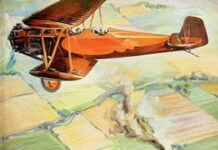Kites were the beginning of the history of flight. However, they could not compare with birds, because they were tethered by a piece of string, or lost forever in a gust of wind. They also had severe limitations in terms of bulk and weight.
There had to be a better way, and humankind’s ingenuity would find it in balloons. However, these were also subjects of the wind when flying free. Brave pioneers imagined using oars and sails, and even flocks of birds.In 1670, a Jesuit priest Francesco Lana de Terzi imagined a flying galleon steered by a sail. Each of the auxiliary masts supported a thin copper sphere filled with air. Terzi hoped these would provide lift if he pumped out the air.
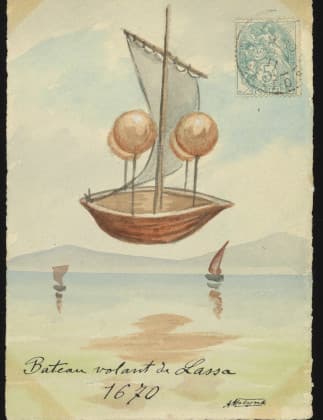
https://en.wikipedia.org/wiki/Francesco_Lana_de_Terzi#/media/File:Bateau_volant_ws859g81n_0_9p290b295.tiff
Francesco Lana de Terzi’s idea of a vacuum airship was feasible in theory, although in practice the outside atmosphere would have crushed the spheres. Then, 39 years later another priest, Bartolomeu Lourenço de Gusmão came up with a different idea.
He proposed spreading a huge sail over a ‘boat’ like a tarpaulin over a wagon. Bellows would fill it with air providing lift. Magnets encased in hollow balls would provide propulsion. Unfortunately, or perhaps fortunately Francesco Lana de Terzi dieed without testing his theory.
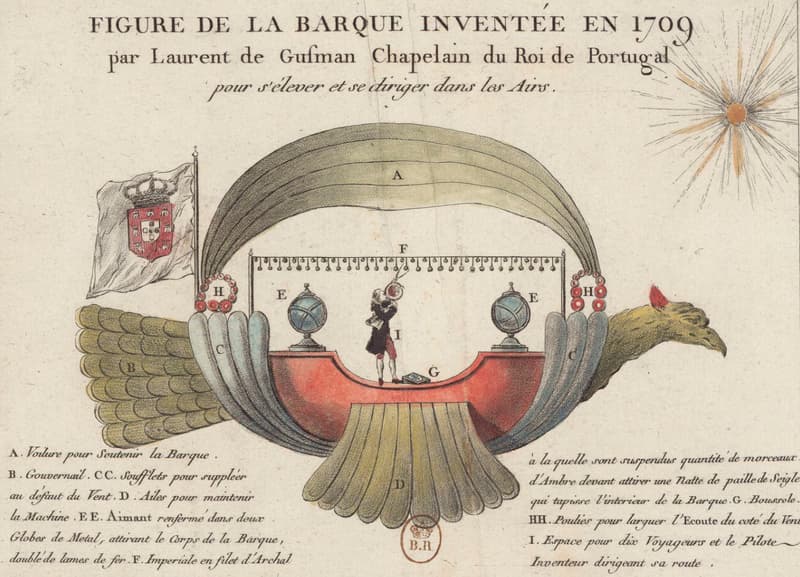
https://en.wikipedia.org/wiki/File:Figure_de_la_Barque_invent%C3%A9e_en_1709_par_Laurent_de_Gusman,_Chapelain_du_Roi_de_Portugal,_pour_s%27%C3%A9lever_et_se_diriger_dans_les_Airs_-_Biblioth%C3%A8que_nationale_de_France.png
The Discovery of Hydrogen Gas and Balloons
An Englishman Henry Cavendish discovered hydrogen gas in 1777. He was a notoriously shy man and did bit take his discovery further than publish a paper. However not long afterwards, Scotsman Joseph Black proposed a balloon would lift if filled with hydrogen.
However, French brothers Joseph-Michel Montgolfier and Jacques-Étienne Montgolfier beat him to the posts with the first working hydrogen balloon. The successfully launched their tethered invention on June 4, 1783 before a huge crown in Paris.
Elsewhere, innovator Jacques Charles and the Robert brothers were fabricating a hydrogen balloon from rubberized silk. It took to the air on August 23, 1783, and flew for 45 minutes with riders in hot pursuit. Terrified villagers attacked it with pitchforks and knives after if landed 13 miles away, and utterly destroyed it.
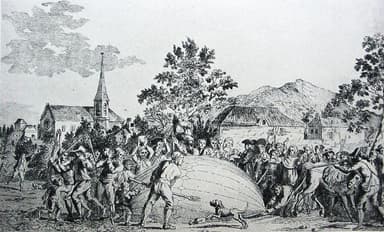
https://en.wikipedia.org/wiki/File:WasserstoffballonProfCharles.jpg
Voila! The First Manned Flights in Balloons
The Montgolfier brothers followed up with the first tethered flight with people on board on October 19, 1783. Then on November 21 of that year two volunteers completed a five-mile flight in a hot air balloon with a wood fire burning in the basket.
The pilot was Jean-François Pilâtre de Rozier, a chemist, physics teacher, and pioneer in aviation. His gallant passenger was the marquis François Laurent le Vieux d’Arlandes, and infantry officer in the French royal guard.

http://lhldigital.lindahall.org/cdm/ref/collection/eng_tech/id/12987
But innovator Jacques Charles had not lost heart after the peasants destroyed his balloon with pitchforks. He and one of the Roberts brothers, Nicholas Louis launched a second manned hydrogen balloon on December 1, 1783.
They launched from the Jardin des Tuileries in Paris before a crowd of 400,000 people, and ascended to 1,800 feet. Two hours later they landed at sunset having covered twenty-two miles.
Jacques Charles relaunched on his own straight away, and ascended rapidly to approximately 9,800 feet. There, he saw the sun for the second time that day. However, he suffered extreme earache and declared he would never fly again.
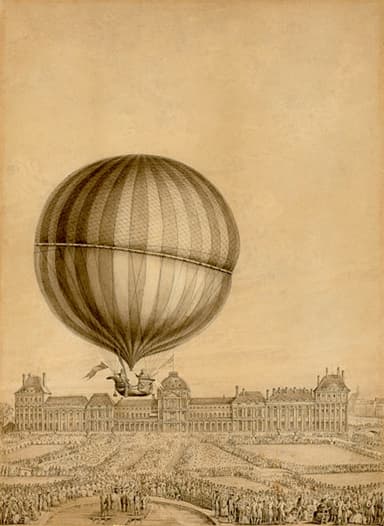
https://en.wikipedia.org/wiki/File:Jacques_Charles_Luftschiff.jpg
Another French pioneer balloonist Jean-Pierre (François) Blanchard made his first successful hydrogen balloon flight in Paris the following year. After that he moved to London where he flew some distance from London to Kent.
However, he only really became famous when he flew from Dover Castle in England across the channel to Guînes south of Calais France in 1785. The French King commanded the balloon and boat to be hung up in the Church of Église Notre-Dame de Calais.
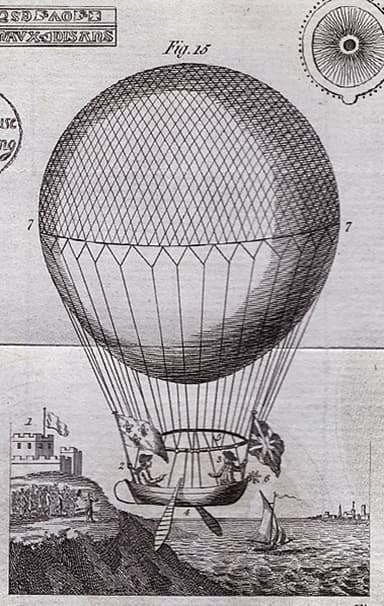
https://en.wikipedia.org/wiki/File:Blanchard_Crossing_English_Channel.jpg
Thereafter Blanchard demonstrated his balloons with pioneering flights in Belgium, Germany, the Netherlands, and Poland. Then, in 1793 he travelled to the United States where he launched America’s first balloon flight from the prison yard of Walnut Street Jail in Philadelphia, Pennsylvania.
He landed some thirteen miles away at the Clement Oak in Deptford, Gloucester County, New Jersey. This must have been quite a sensation, since President George Washington was in attendance. As also were future presidents John Adams, Thomas Jefferson, James Madison, and James Monroe.
Jean-Pierre Blanchard continued doing what he loved until he suffered a heart attack, and fell from a balloon in the Hague, Netherlands in 1809. His widow Sophie Blanchard continued the work until she too died in a balloon accident ten years later in Paris.
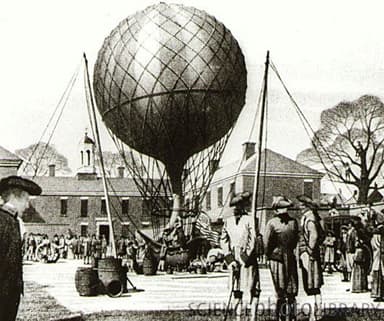
https://www.bbml.org.uk/222-years-ago-jean-pierre-blanchard-made-the-1st-balloon-flight-in-america/
Hot air and hydrogen balloons became the playground of the rich to a large extent after that. That was most probably because the riddle of propulsion, drag, lift, and weight was only partly solved. Balloonists knew how to launch and land their craft. However it was the direction of the wind that determined their destination.
In 1849 the Austrian Navy paddle steamer Vulcano took part in the blockade of Venice after the city declared independence from the Austrian Empire. It launched the first known aggressive attack with balloons in history.
Vulcano launched hot air paper balloons carrying 24- to 30-pound bombs that were to be dropped from the balloon with a time fuse over the besieged city. At least one bomb fell on the city. However, a change in the wind sent the rest off target.

https://www.researchgate.net/figure/Left-the-first-aerial-bombardment-in-history-performed-with-UAV-balloons-by-the_fig1_338526753
https://www.researchgate.net/publication/338526753_Design_and_Control_of_Multi-Directional_Thrust_Multi-Rotor_Aerial_Vehicles_with_applications_to_Aerial_Physical_Interaction_Tasks
Frenchman Baptiste Jules Henri Jacques Giffard decided to solve the principles of flight by building a hydrogen balloon that tapered at each end, with thrust onboard and a steerable tiller. But first he had to invent aerial propulsion using a steam engine.
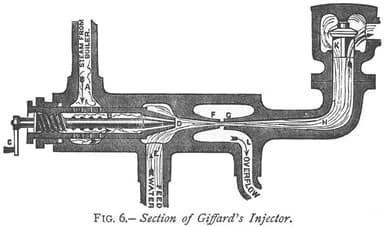

https://en.wikipedia.org/wiki/Henri_Giffard#/media/File:Injector_Giffard-02.jpg
Giffard’s steam engine was the cross-over moment to a steerable dirigible airship with a triangular, sail-like rudder at its aft end. He suspended a platform below it for the pilot and stem engine.
On September 24, 1852 the 144-foot long Giffard airship rose into the sky from the Place de l’Etoile hippodrome in Paris. It made a controlled flight to Élancourt 17 miles away in 3 hours. It manoeuvred successfully along the journey. However, the engine was not sufficiently powerful to overcome the wind on the return trip.

https://en.wikipedia.org/wiki/Henri_Giffard#/media/File:GiffardAirship.JPG
Giffard went to great lengths to prevent his steam engine igniting the highly-flammable hydrogen gas. He diverted the 3.0 hp steam engine’s exhaust pipe downwards through the platform, and surrounded the boiler’s stoke hole with wire gauze.
Meanwhile, electric motors were developing in great leaps. It would be only a matter of time before they joined the race for the stars. However Giffard would not be there to participate. He took his own life in 1882 after his eyesight began to fail, and bequeathed his entire estate to the French-speaking nation.
But somebody else was waiting in the wings to carry the baton forward. This time it was Gaston Tissandier, a teacher at Association Polytechnique in France whose mission was to provide free and public education for workers. However, he was also a science writer fascinated by emerging flight technology.
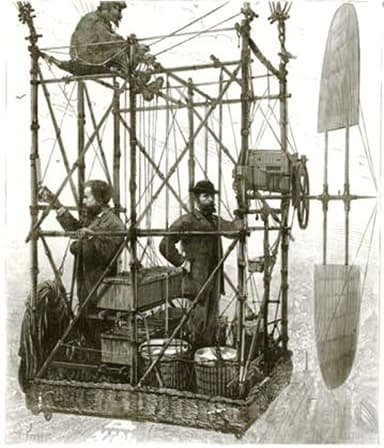
https://en.wikipedia.org/wiki/File:Tisandier-3.jpg
He and his brother, aviator, architect, and illustrator Albert Tissandier were already experienced aeronauts by the time they constructed their 91-foot long electrically-powered dirigible with a 1.5 hp Siemens motor using the following technology:
· The electric motor rotated at 180 rpm to drive a two-bladed propeller through a reduction gear
· The energy source was 24 potassium bichromate battery cells producing 26 pounds of thrust
The airship hovered successfully at 31 feet above the ground before it landed, and tethered successfully to the cheers of a small crowd.

https://en.wikipedia.org/wiki/Gaston_Tissandier#/media/File:Elktroluftschiff.jpg
Balloons for Military Observation and Bombing
The French Revolution saw the first military use of observation balloons in 1794 at the battle of Fleuris. The larger one, L’Intrepide is on display at the Heeresgeschichtliches Museum in Vienna after being captured at the battle of Würzburg in 1796. The specification is as follows:
· Silk envelope approximately spherical with a diameter of 32 feet
· Very small wooden gondola 45 inches by 30 inches x 41 inches high
The envelope on display is a replica, while the folded original is stored in a case nearby.
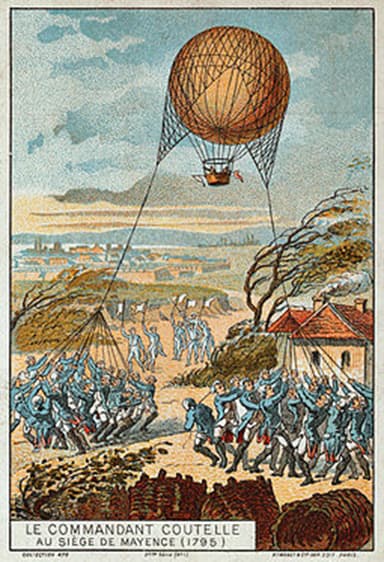
https://en.wikipedia.org/wiki/File:Early_flight_02561u_(1).jpg
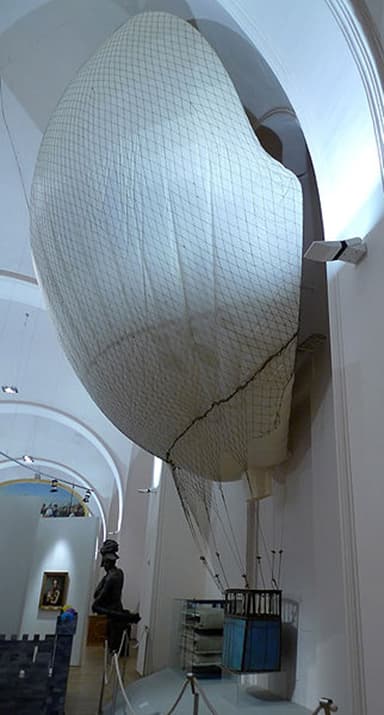
https://en.wikipedia.org/wiki/File:HGM_L%27Intr%C3%A9pide.jpg
In late May, 1862 Union loyalists used balloons to reconnoiter Confederate positions during the American Civil War. Professor Thaddeus S.C. Lowe, Chief Aeronaut of the Union Army Balloon Corps, made his first ascents over the Potomac River, telegraphing information back to friendly forces on the ground.
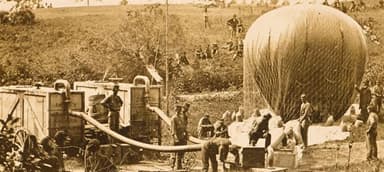
https://www.worldwars.com/early-naval-aviation/
Military balloons also provided observation platforms during the Franco-Prussian War (1870–71), and also during expeditions to Botswana by the British Army’s Royal Engineers in 1884, and Sudan in 1885.
They were also deployed during the Second Boer War (1899–1902), where they were used for artillery observation at the Battle of Magersfontein and during the Siege of Ladysmith.
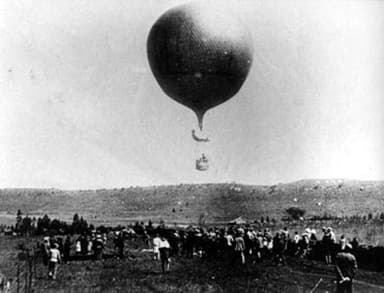
https://www.britishbattles.com/great-boer-war/siege-of-ladysmith/
Returning to Airships
Returning to airships, Albert and Gaston Tissandier’s invention lacked sufficient horizontal propulsion to be truly self-propelled. In 1879 two Frenchmen, Charles Renard and Arthur Constantin Krebs constructed a larger version in a hangar near Paris. They named it ‘La France’ and it finally heralded the birth of the powered aeronautical age.
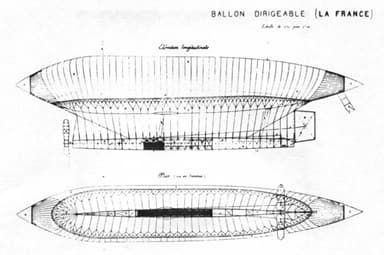
https://www.thisdayinaviation.com/tag/arthur-constantin-krebs/
The 170-foot-long airship had an electric motor running on a zinc-chlorine battery weighing 959 pounds. It completed a 5-mile round trip in 23 minutes on August 9, 1884, making this arguably the first controlled manned flight.
Something else had changed too. The drums of war were beating in Europe as colonial powers fought over the spoils of their conquests in Africa. The La France airship belonged to the French Army. Flight was no longer the preserve of the rich and inventive. It was becoming a weapon of war.
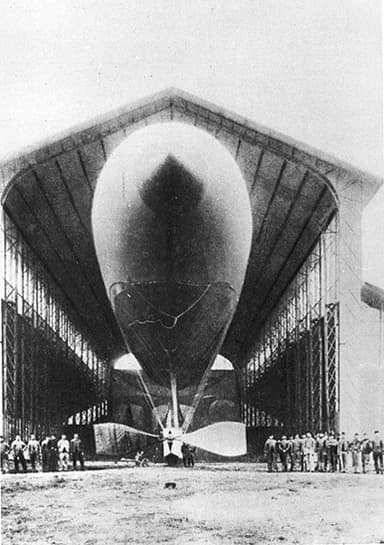
https://commons.wikimedia.org/wiki/File:LaFranceAirship.jpg





